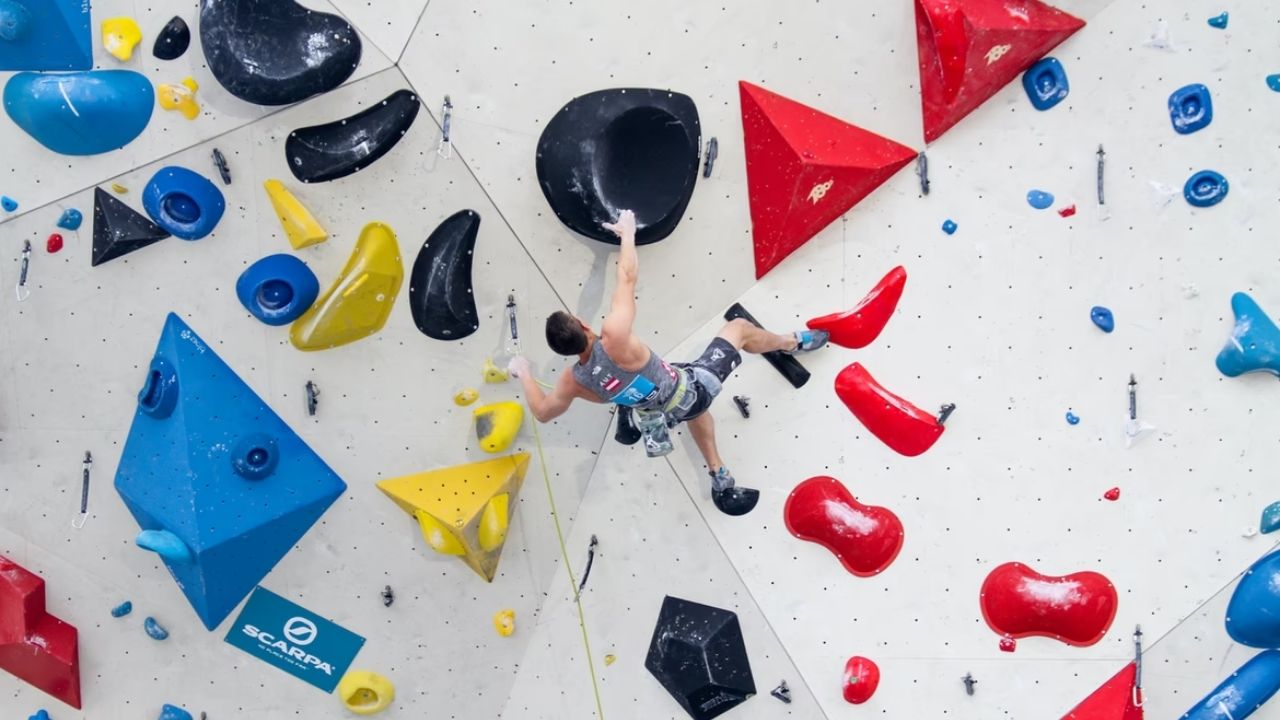Rock climbing and bouldering are extreme adventure sports, and the category comes with a subset of dangers and safety concerns. But does that make climbing not worth the risk? No.
Injuries are a part of life. And while we don’t wish for anything bad to happen, the truth is, anything really can. Statistically speaking, you’re more likely to get into a fatal car accident than to get a fatal climbing injury. Wouldn’t that make driving even more dangerous?
To me, it’s about balancing the risk and reward. Also, I’ve been climbing for more than a decade without a single significant injury so far. So I’m confident you can stay protected if you pay attention and follow proper safety protocols when climbing.
With that said, let’s look at some of the common climbing injuries and what you can do to prevent them.
What are the most common injuries in rock climbing?
There are three types of rock climbing injuries. Impact injuries occur when the climber falls onto another surface / ground or if an object (say debris) falls on the climber. Non-impact climbing injuries stem from acute trauma, while chronic overuse injuries occur due to repetitive climbing.
Most Common Shoulder Injuries in Rock Climbing
Climbing has a lot of positions involving shoulder-intensive movements, overhangs, and whatnot that put a huge amount of pressure on our muscles. Depending on how you manage them, this could lead to anything from minor abrasions to temporary injuries to even permanent ones.
1. Subacromial Impingement
In layman’s terms, impingement is a medical condition that leads to a whole lot of pain when tendons are placed under immense pressure.
Impingement in the subacromial roughly accounts for 33% to 51% of shoulder-related climbing injuries. The scapulohumeral rhythm is the kinetic movement between the humerus and scapula.
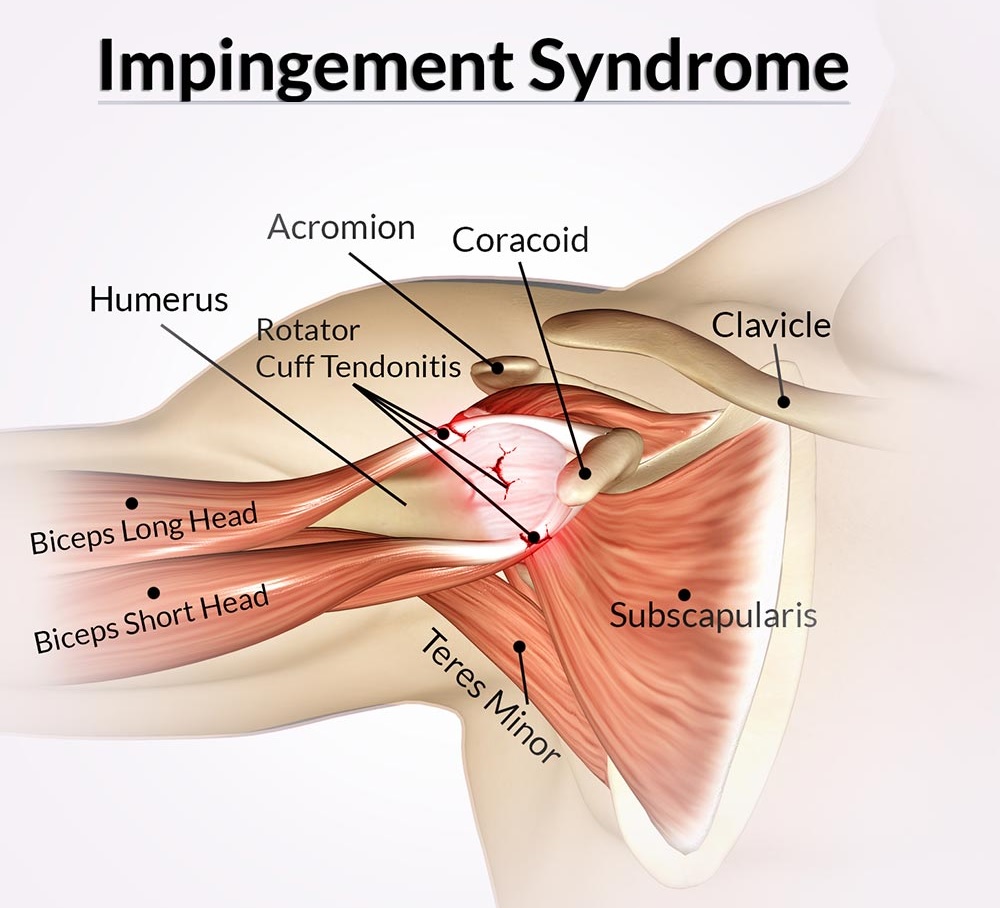
Any change or impingement in the “normal” position between these two leads to a medical condition called “subacromial dysfunction” or “scapular dyskinesis.” The muscular imbalance caused by climbing or climbing-related training mostly leads to subacromial impingement.
2. Rotator Cuff Injuries
You could say that rotator cuff injuries are a part of daily life for regular climbers. Rotator cuff injuries happen when you overdo the overhead position trying to pull your body weight – which is essentially the most common aspect of climbing.
The bigger issue is that a weak rotator cuff movement can lead to several problems later in life, such as muscle tears or even tendonitis. You’ll not only have a shorter range of motion but a lot of pain when lifting stuff as well.
Injury Treatment
Conservative treatment or physiotherapy has proven quite valuable in these cases. An exercise program that focuses on rotator cuff strengthening is particularly important for climbers suffering from rotator cuff injuries or tears.
Consult with a trainer, try some exercises and positions to strengthen your rotator cuffs and balance out the scapulohumerals’ relative position. Wall clock, the looped band reaches, robber, windmill, and external rotation are some good exercises.
Most Common Elbow Injuries in Rock Climbing
Tendonitis is one of the most common rock climbing injuries. It occurs when you keep overexerting yourself without a proper warmup, rest, and care.
Tendonitis literally means inflammation or irritation of tendons because the problem is accompanied by a lot of pain and some swelling in the affected area.
There are three major tendonitis injuries associated with rock climbing – tennis elbow, jumper’s knee, and the pitcher’s shoulder. Out of the three, tennis elbow is the most common.
1. Tennis Elbow
Tennis elbow or “lateral epicondylalgia ” occurs due to the excessive lateral forces acting on your arm due to the overexertion of extensor forearm muscles. This causes a lot of pain every time you put a strain on your elbow, even if it’s as tiny as tightening an empty grip.
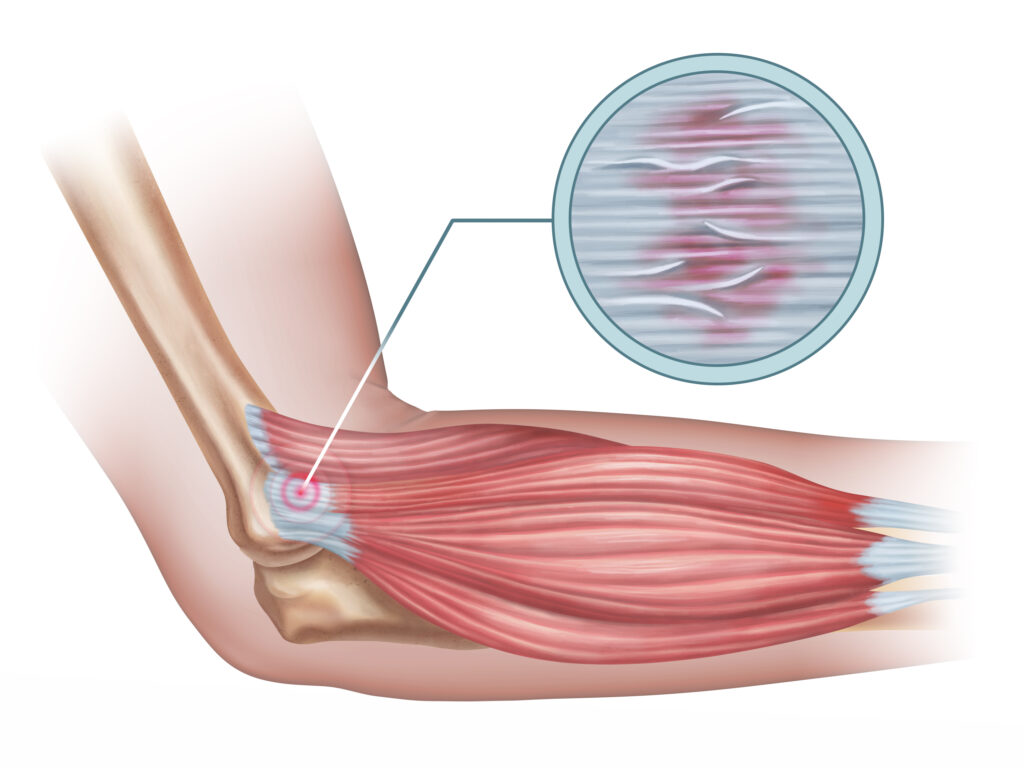
Once the symptoms begin, you pretty much have 6-12 months to take all the necessary steps and resolve the situation as quickly as possible. Doctors tend to suggest surgery if there’s no significant improvement after 12 months.
Injury Treatment
Taking plenty of rest and performing anti-inflammatory activities (hot-cold compress) will be your primary line of defense against the injury. Consult your primary care provider to get anti-extension bracing to prevent further injury.
After that, get into a physiotherapy routine for progressive overloading and return to climbing, stronger and healthier.
Most Common Hand, Wrist & Finger Injuries in Rock Climbing
The common climbing injuries related to your hands, wrist, and fingers are interrelated in one way or another, so I’ve listed them in one go.
1. Annular Pulley injury
Annular pulley injury or A2 pulley strain is the most common climbing-related injury. It usually occurs in the ring or middle finger caused by the tension in tendons and ligaments as you move (by gripping and bending fingers) between different holds.
Honestly, you could write an entire article on the A2 pulley strains from early symptoms and treatment to post-treatment physiotherapy. Common symptoms of annular pulley injury include a faint popping sound as you pull your finger, which is immediately followed by minor bruising, swelling, and pain.
If this happens, take plenty of rest, ice it immediately, and contact your primary care provider.
2. Collateral Ligament Strains
Collateral ligament strains might as well be called the “unavoidable strains.” The collateral ligaments can be located around each finger’s joints and get strained or injured when you move from one hold to another. This could lead to pain, inflammation, and swelling in your fingers.
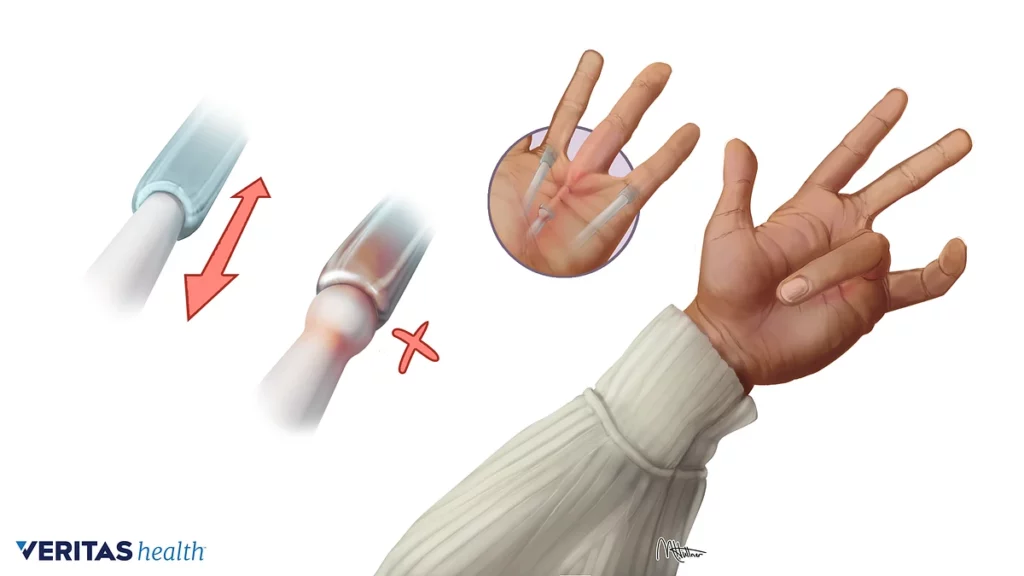
3. Trigger Finger Syndrome
The trigger finger syndrome is yet another tendon-based injury. It happens when you overexert the flexor tendon, leading to inflammation and mild to severe pain.
The treatment varies from mild pain medication to a high dosage to a doctor-recommended surgery in severe cases.
4. TFCC Damage
The most common climbing-related wrist injury is damaging the cartilage structure on the wrist that sits between the end of the ulna (forearm bone) and the carpal bones.
It’s called triangular fibrocartilage complex (TFCC), and TFCC damage can cause instability because it supports the rotation of your arm.
Injury Treatment
Different arm injuries have different treatments. While it’s good to take anti-inflammatory measures such as medication and hot-cold compress, I strongly suggest consulting a doctor as soon as possible.
Most Common Knee & Ankle Injuries in Rock Climbing
While major knee and ankle injuries are not as common, you should still have fundamental knowledge about them to prevent mishappenings.
1. Ankle Injuries
You could say that minor ankle injuries are pretty much unavoidable as a beginner because you’ll be falling a lot during bouldering and top-roping. This puts pressure on your ankles, increasing the risk of sprains and fractures.
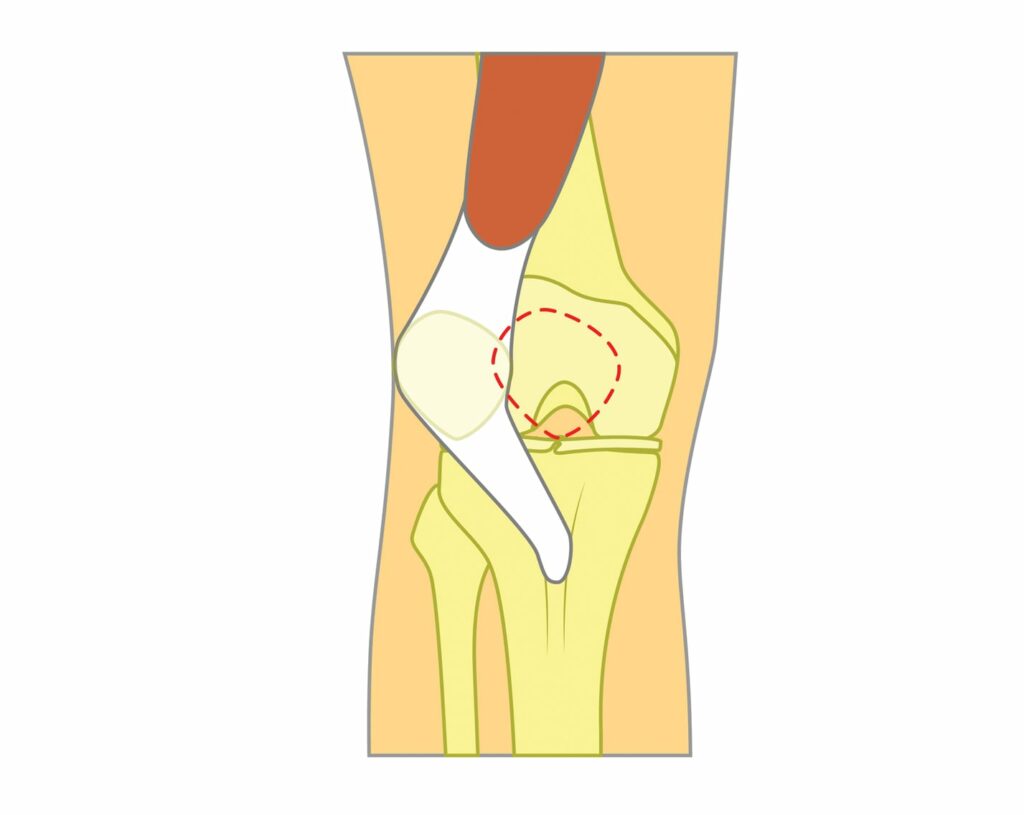
2. Knee Injuries
Knee injuries pretty much happen for the same reason – falling repetitively in incorrect positions. This directly affects the meniscus, tendons, or ligaments attached to the knee joint.
Additionally, putting excessive pressure while climbing or “drop knee” can also lead to severe problems such as dislocated patella. Or a minor one like bursitis (inflammation of the bursa).
Injury Prevention & Treatment
Fortunately, preventing them is also easy. Invest in a good pair of climbing shoes that fit you perfectly and learn the proper falling techniques.
Pro Tip: How to prevent climbing injuries?
According to primary data, you need to take extra care of the upper extremities of your body as a climber. Injuries in the lower part are less common.
Candidly speaking, you’re gonna get hurt during rock climbing. It’s an intense and demanding activity, but you can still take steps to prevent permanent or even minor injuries.
Fortunately, you don’t need to learn anything new. We have known the fundamental rule since childhood. Warm up and stretch before doing any physical exercises because it increases your muscles’ blood flow and flexibility, thereby reducing the risk of “pulling the wrong muscle.”
Also, the latest research studies indicate that yoga can be your ultimate weapon against climbing injuries. It not only works as an excellent warm-up, but it efficiently stretches your muscles to increase mobility. Yoga also helps in balancing (or stabilizing) your core – as a climber, there’s nothing more that I could ask for.
But if yoga is not your jam, the basic idea is to perform dynamic stretching, more muscle flexibility, and about 5-10 minutes of aerobic exercises to increase blood flow.
Verdict: Is rock climbing too dangerous?
No one said rock climbing isn’t dangerous; it’s an extreme sport, after all. But I’d say that the danger is easily manageable.
A research paper published in 2019, “Climbing Accidents—Prospective Data Analysis,” found that climbing accidents account for only 10% of sports-related injuries. Incidents only lead to minor injuries in most cases.
While it’s a somewhat subjective matter, I find the risk and reward ratio to be heavily in favor of the rewards, provided you take appropriate steps for safety.
To put it in perspective, you’re more likely to get hit by lightning than to die climbing. I don’t know about you, but those odds look good to me.
Enjoy your next climb!

